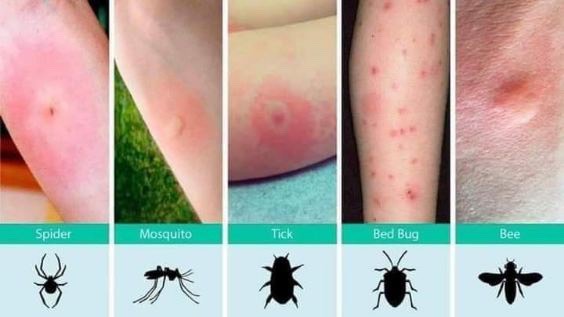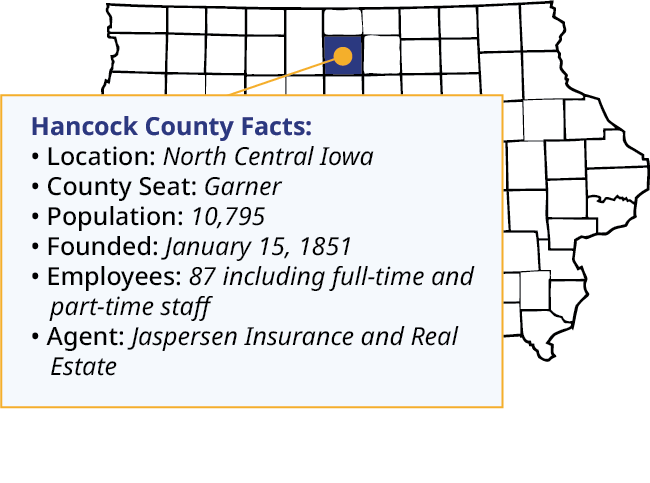Plants and Insects: What to avoid
For as many advantages as there are to working outdoors in the summer, there are dangers that if not aware of, can cause insect bites and rashes. If your job requires you to be outside or if you are working on a weekend project it is important you are aware of the hazards around you.
Three plants to avoid:



- Poison Ivy. This plant does not have thorns or any type of fuzz but is best known for its three leaves approximately 2-5” each in length. The most common reactions come from the oil contained on the plant. The best way to protect yourself is to wash clothes as well as hands that may have come in contact with these plants.
- Wild Parsnips. These usually flower late in the spring to mid-summer. They can be easily identified by the yellow flowers on the top and are usually found along ditches. You will know if you have been exposed by the painful blisters that will appear. Again, your best defense, if you are exposed, is to wash yourself as well as all your clothes.
- Stinging Nettles. This one can be found along streams and can widely vary in length. This one will “sting” you if you touch it but the symptoms usually subside in just a short few minutes.

Insects to avoid:
- Mosquitos. They come around every summer, and although their bite won’t directly kill you, they are known to transmit some deadly diseases such as Zika, Malaria, and West Nile virus. Mosquitos are characterized by wings that are longer than its body. They can vary in color but have long, beak-like mouth-sucking parts.
- Ticks. Similar to the mosquito their bite won’t directly kill but again they are known to carry and transmit some very dangerous diseases. These can include Lyme disease and Rocky Mountain spotted fever. Ticks are very hard to see at times, they can have different markings on them depending on the species, but all have 8 legs. Once they attach to a source they will swell up.
- Spiders. The brown recluse and black widow spiders are venomous and usually hide in dark areas as well as among logs, mulch, and outbuildings. The brown recluse is characterized by a sandy brown color with a darker mark on its body, there are no markings on the legs. Female black widow spiders can be distinguished by a red marking on their belly resembling an hourglass shape as well as shiny and hairless black bodies and the male of the species is marked with brown and white.
IMWCA recommends wearing long sleeves and long pants, especially while weed-eating or working in tall grass to avoid contact with poisonous plants and insects. Be sure to check for insect bites after being outdoors even if wearing long pants. If you come in contact and develop a rash or bite mark we recommend giving Company Nurse a call to report the claim in case any further issues develop.
Member Highlight: Hancock County

Hancock County joined the IMWCA risk pool in 2016. The County has reduced its experience modification factor to near its minimum. They have also significantly reduced their loss ratio, which is very low.
IMWCA staff recently met with County Auditor Michelle Eisenman and Shaun Hackman, Assistant to the County Engineer/safety coordinator to discuss the County’s safety efforts.
Why do you think the County has been successful in providing a safe workplace?
Our goal is to make sure our employees are well-trained in safety and aware of the hazards at the workplace. We have tried to create as safe of an environment as possible.
What do you do for safety training and how often?
As for the Secondary Roads Department, we have a yearly review of MSHA with Moyson Resources, Instructed by Linda Moyna. Also, this year we have implemented quarterly safety training with our guys. In groups of 6-7, we go over one hour’s worth of training videos from the IMWCA website. Last fall we offered AED/CPR training to anyone in the Court House. We also have completed Run, Hide, Fight training as well as annual tornado and fire drills.
Do you have a Designated Provider and a Return-To-Work policy?
Yes, the Board passed a policy back in April 2017. We gave them job descriptions of all our employees so they would know when they could have them return to work. We also implemented a policy to have any injury reported to Company Nurse to start an incident report.
Do you require Post Offer Physicals of new hires?
Yes, we do, and a drug and alcohol screening. The secondary roads department also has our guys in a pool that gets randomly selected quarterly throughout the year. We also have new hires go through a Physical Capacity Test to see where they are and what they are capable of handling. This way if that individual gets hurt on the job, the company nurse has a baseline for those worker’s capabilities.
What other proactive safety steps do you practice?
We encourage our workers if they see something, to say something to a supervisor/foreman if they think something is unsafe or looks like it might cause an accident.
What words of wisdom do you have for other members of IMWCA to help them develop their safety culture?
We have had our Safety Committee now since May 2016, and since then we have felt as a group, we have helped our employees recognize safety concerns around the county. We have always wanted to make the workplace as safe as possible. Accidents do still happen, but we hope that with the training we have gone over that it will reduce the severity of the injury that occurs.
Did You Know?

Did you know IMWCA staff can make suggestions for new LEARN classes? If you have an idea submit it to your Safety and Risk Improvement Adviser and we can pass it along! Recently IMWCA added the following classes to our library:
Cybersecurity: Data Classification and Handling; Course Code CY22; 10 Min Course
Your organization likely deals with a large amount of data. While some of this data may be available to the public, other data is sensitive and requires your protection. In this course, you’ll learn how to classify different types of information and follow best practices for handling sensitive data.
Cybersecurity: Data Privacy and Security; Course Code CY24; 10 Min Course
Personal information, or any data that can be used to identify an individual, is often considered sensitive and must be protected. Failure to protect personal information may result in a data breach, leading to costly consequences for you and your organization. This course covers how to identify and protect personal information, including following data privacy laws and best practices.
Cybersecurity: Responding to Data Breaches; Course Code CY20; 10 Min Course
A data breach occurs when any unauthorized party is given unencrypted access to personal data. This course covers recognizing and avoiding potential data breaches, and knowing how to respond to data breach situations if one happens to your organization.
Ethics: Governmental Transparency Laws for Public Officials; Course Code HW15; 30 Min Course
This course reviews general ethics considerations related to governmental transparency for public officials, including open and public meetings, record retention, and public access to documents related to government business.
Flagger Safety; Course Code SJ70; 60 Min Course
Flagging is an extremely dangerous job. This course aims to prepare flaggers for work zone fundamentals and introduce proper flagging procedures and protocol. Topics include flagger responsibilities and signals, use and definitions of traffic control devices, and road signs and placement.
If your entity doesn’t have access to LEARN, reach out to your Safety and Risk Improvement Adviser to get access!




